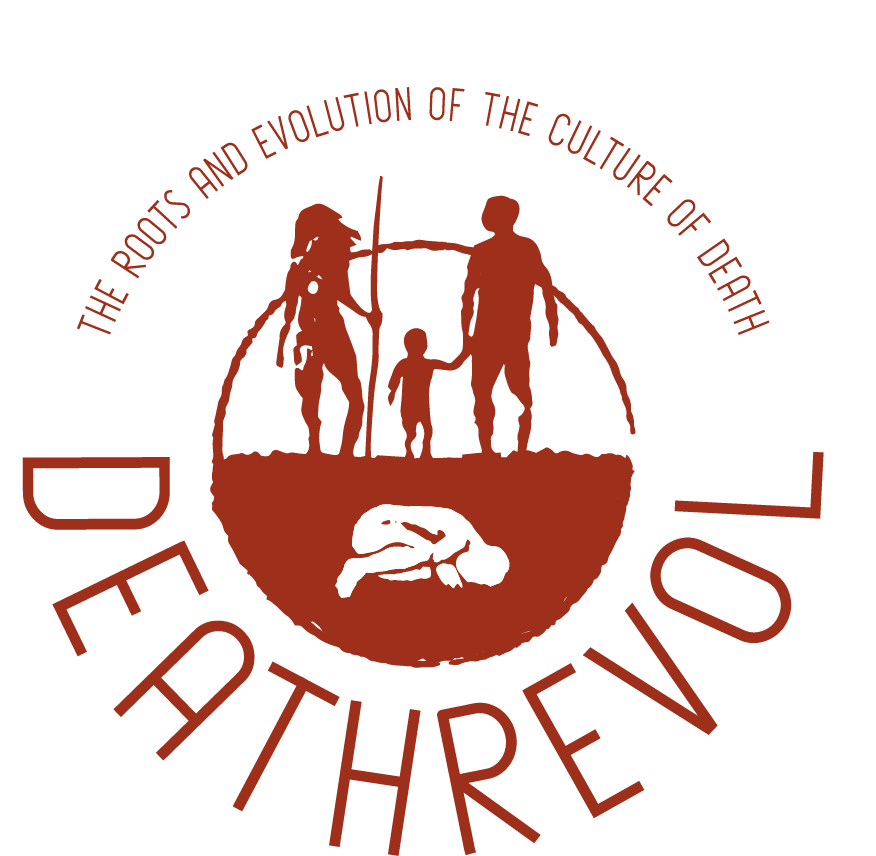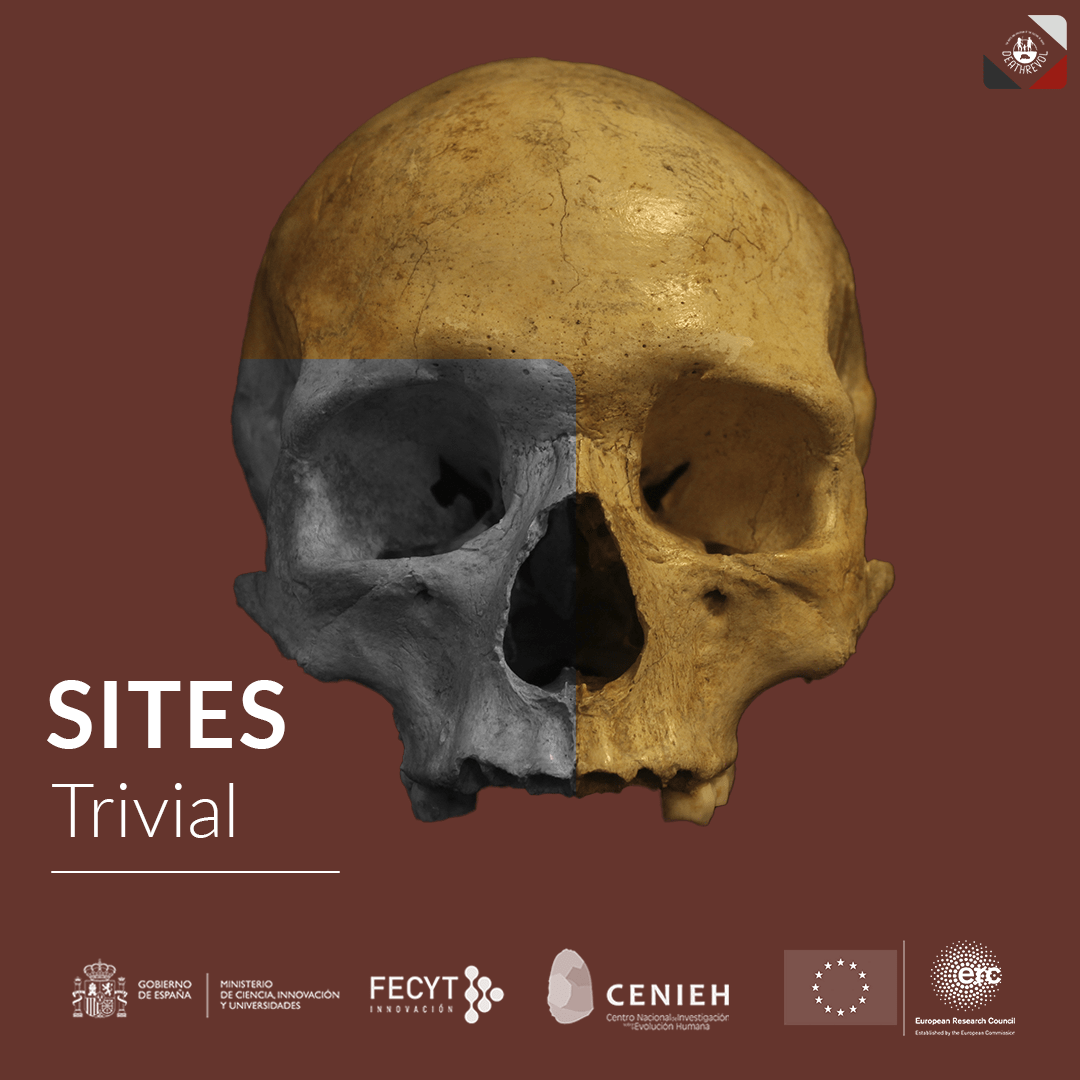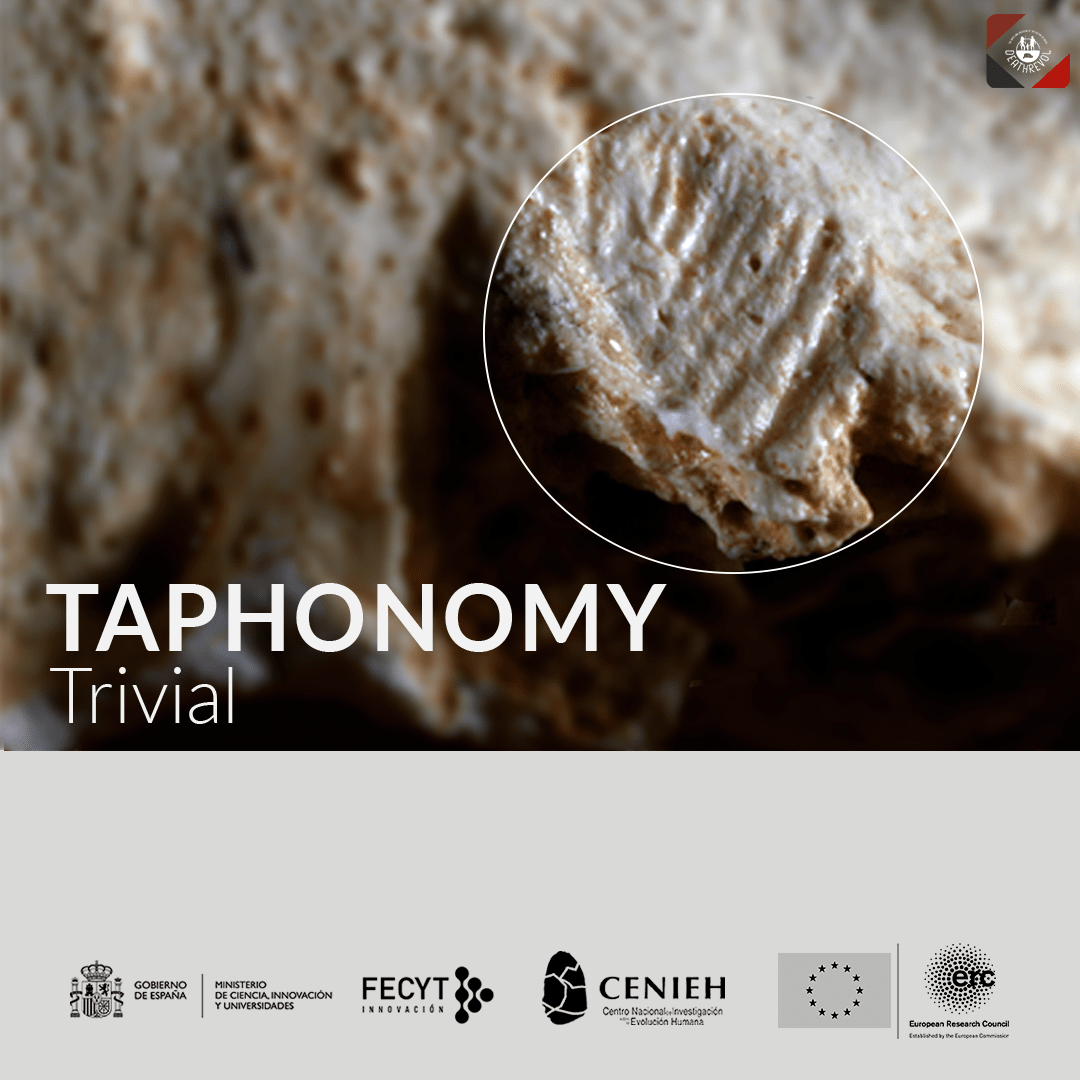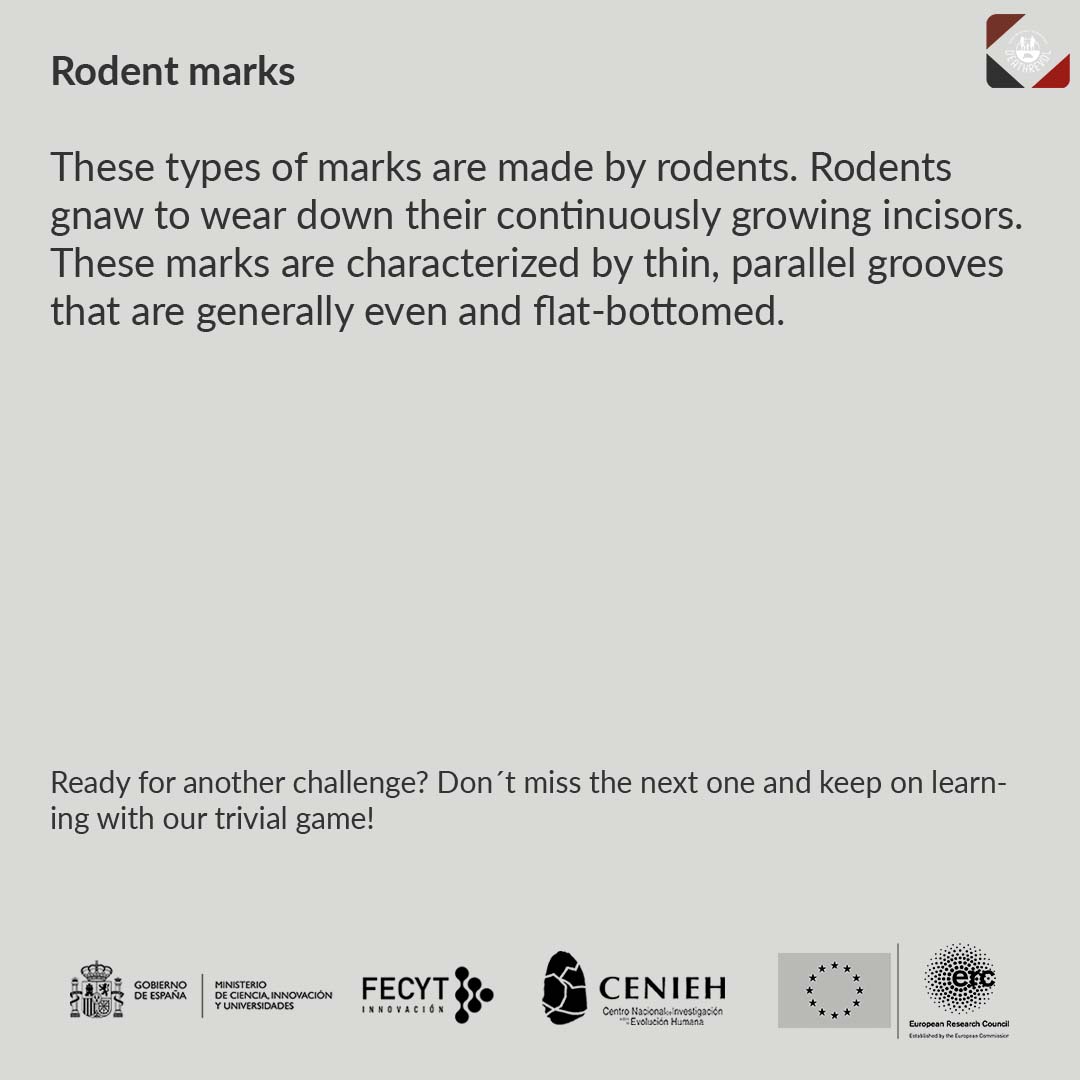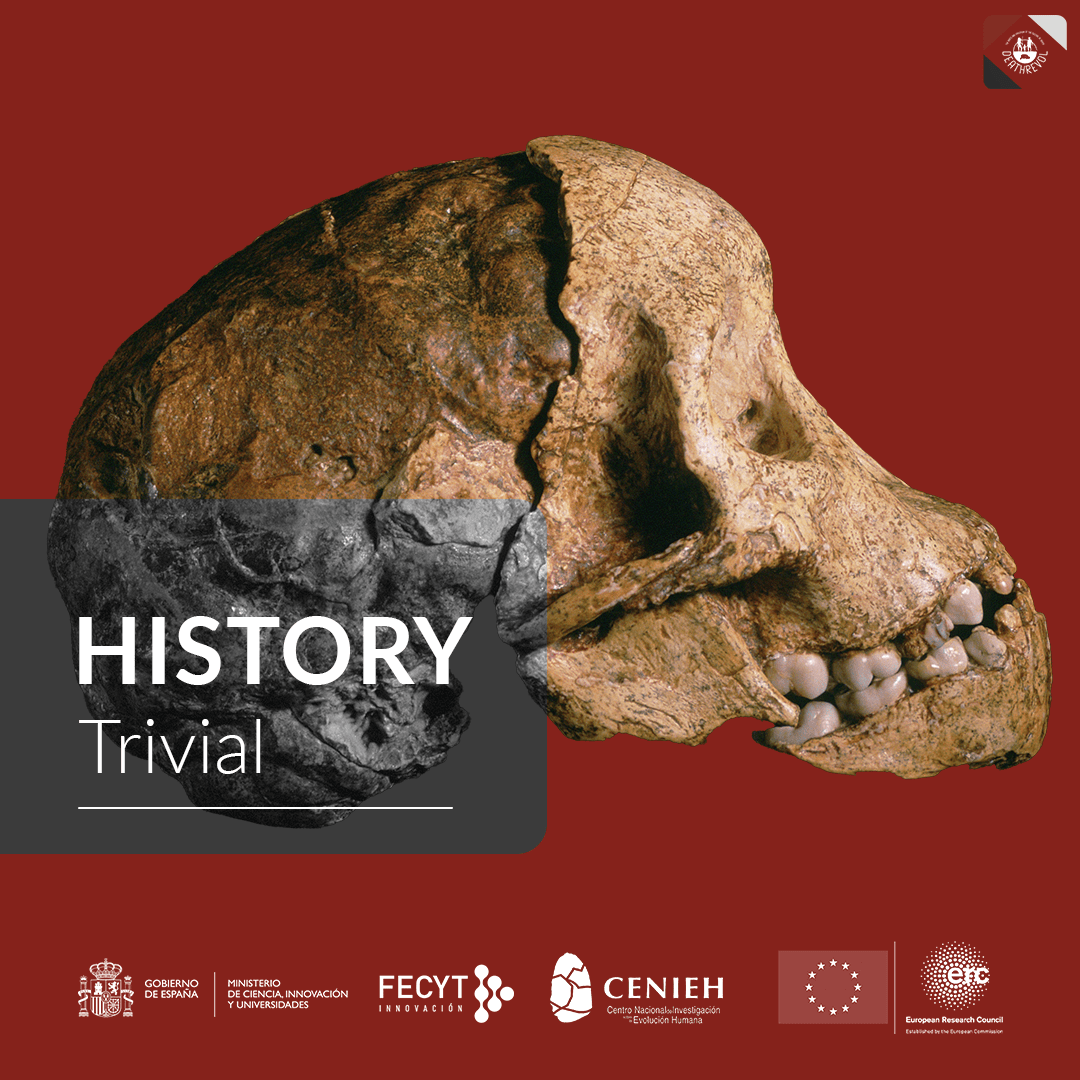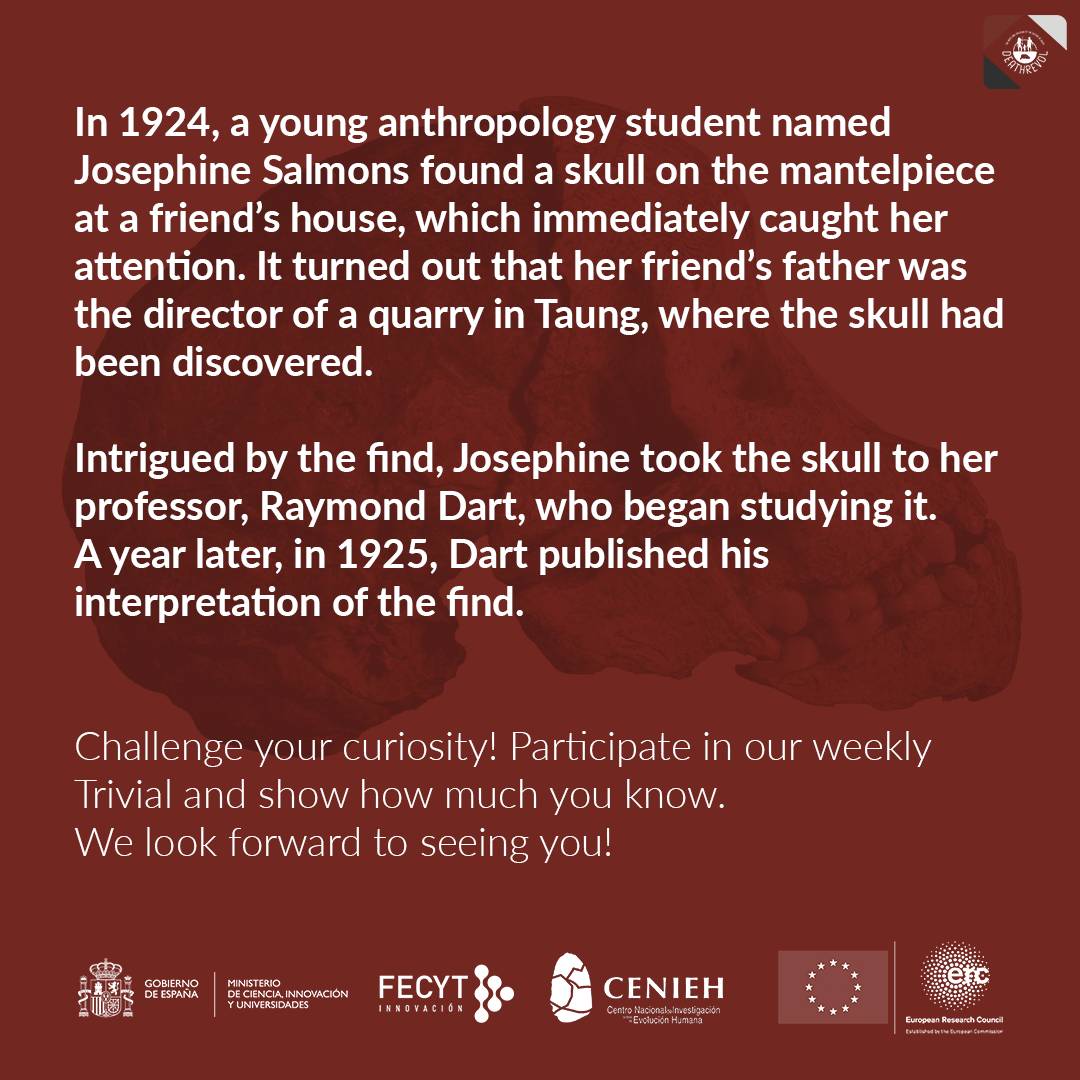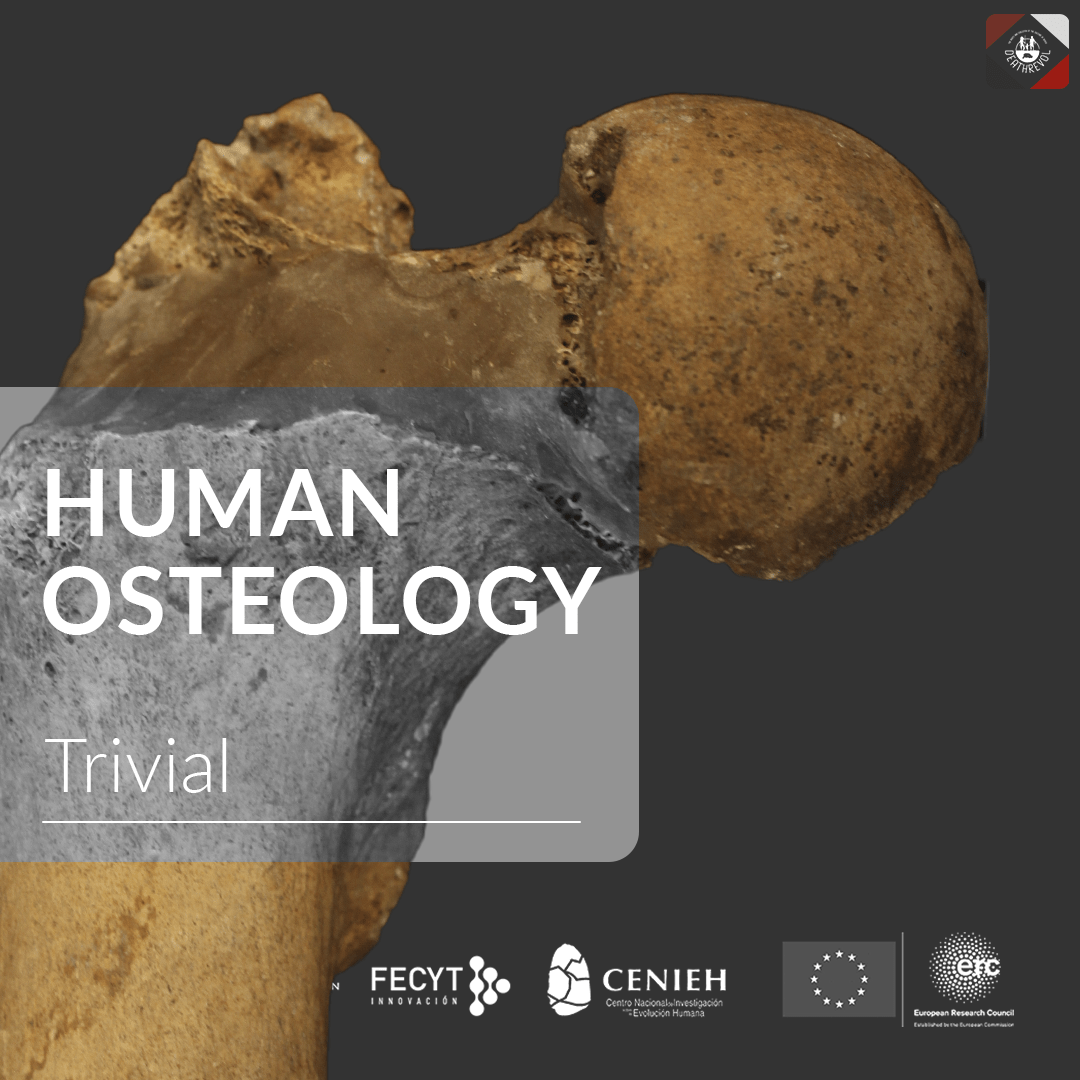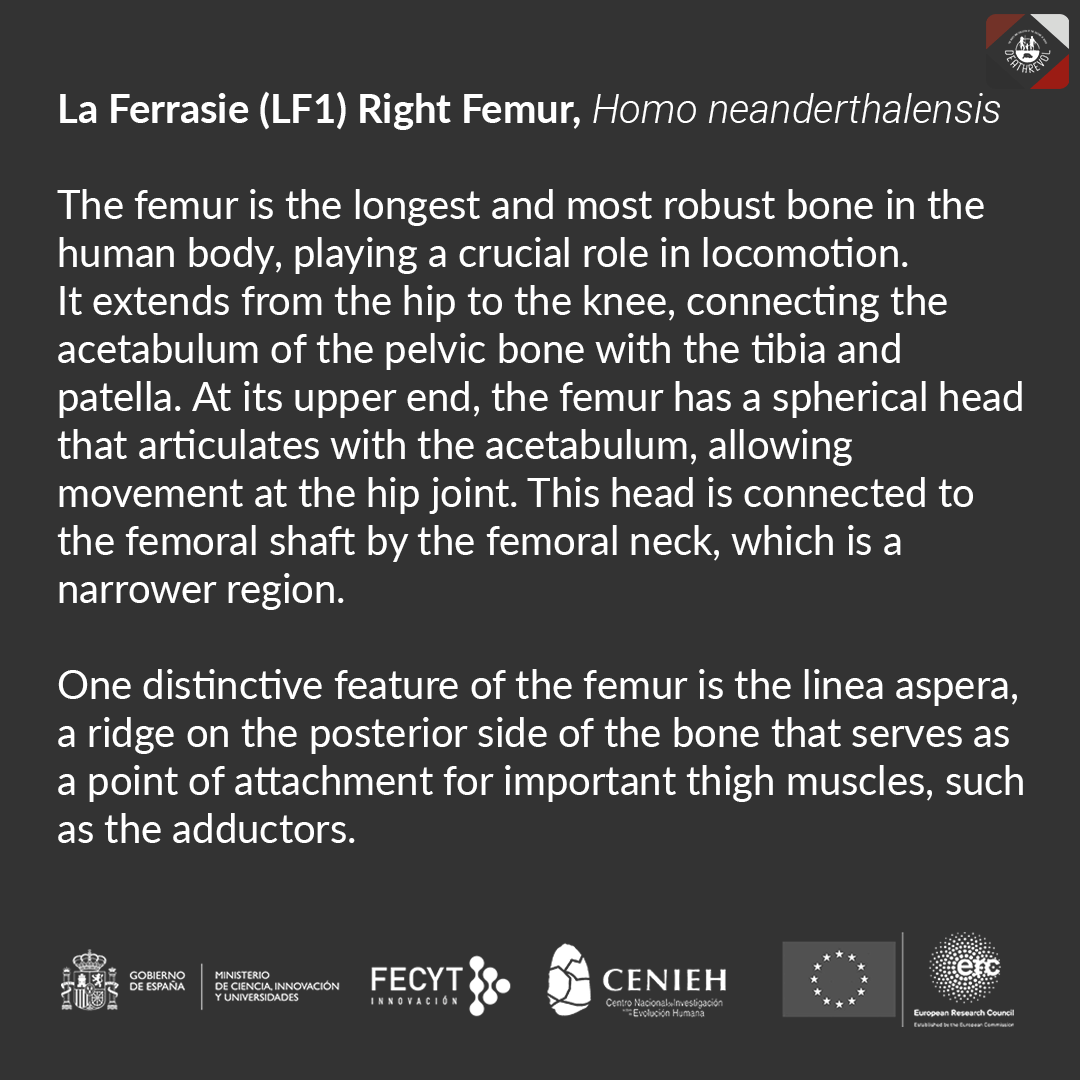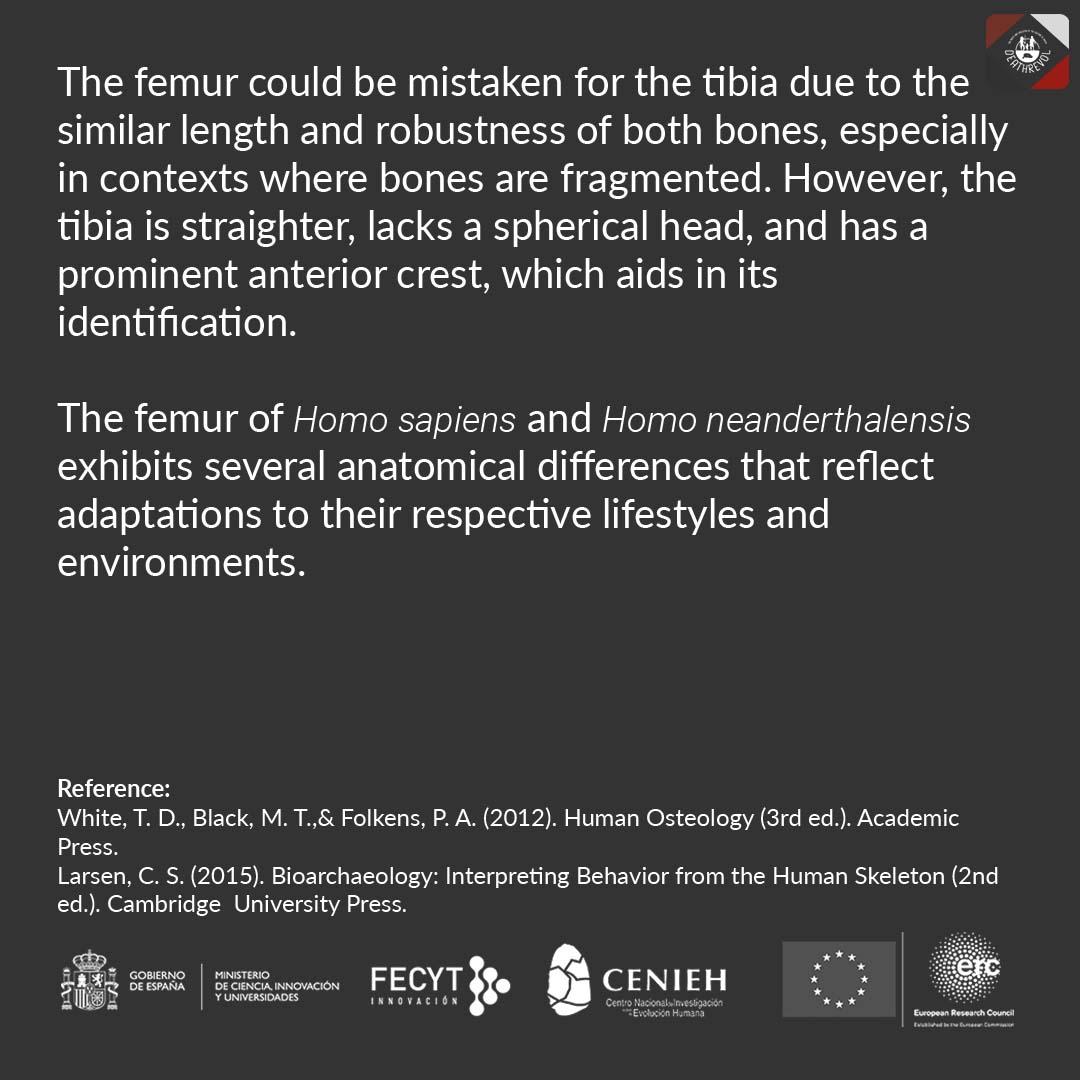TRIVIAL GAME: SITES
Do you identify this skull? If you have participated in our trivial game this week, you may already know that it was discovered at the Abri Pataud site.
For mor information, you can also visit the “sites” section of this website.
TRIVIAL GAME: TAPHONOMY
Bones don´t lie!
Did you know that the marks you see in the image were caused by a rodent?
If you want more information, you can read “Taphonomic-forensic analysis of the hominin skulls from the Sima de los Huesos”.
TRIVIAL GAME: HISTORY
Who discovered the fossil known as the Taung Child? Here you can read the answer!
Also you can listen to episode 5 of our podcast “Historias de la prehistoria” to learn more about this find.
TRIVIAL GAME: OSTEOLOGY
How much do you know about osteology? In the question of this week of our trivial game, we wanted to know if you would know how to recognize a femur from a tibia or a humerus. Here is the full answer!
If you want to learn more about the site where this femur was found, you can visit the “sites” section of our website.
TRIVIAL GAME
At DEATHREVOL we have a new initiative: a TRIVIAL GAME! It is desgined to challenge even the most knowledgeable, but with a fun twist. Because challenging your knowledge and learning new things do not have to be mutually exclusive.
Weekly we will launch a question in our social media: instagram, facebook and X. Are you up for proving what you know in this game?
Put yourself to the test and enjoy our content!
DEATHREVOL TEAM: Andion Arteaga Brieba
You can see more details at team section and at our post of Instagram and Facebook
NOBODY´S LAND?_JAVIER LLAMAZARES
You can find more information here: https://www.science.org/doi/10.1126/sciadv.ado3807
NOBODY´S LAND?_MANUEL ALCARAZ-CASTAÑO: ENDSCRAPER
You can find more information here: https://www.science.org/doi/10.1126/sciadv.ado3807
NOBODY´S LAND?_VIRGINIA MARTÍNEZ PILLADO
You can find more information here: https://www.science.org/doi/10.1126/sciadv.ado3807
